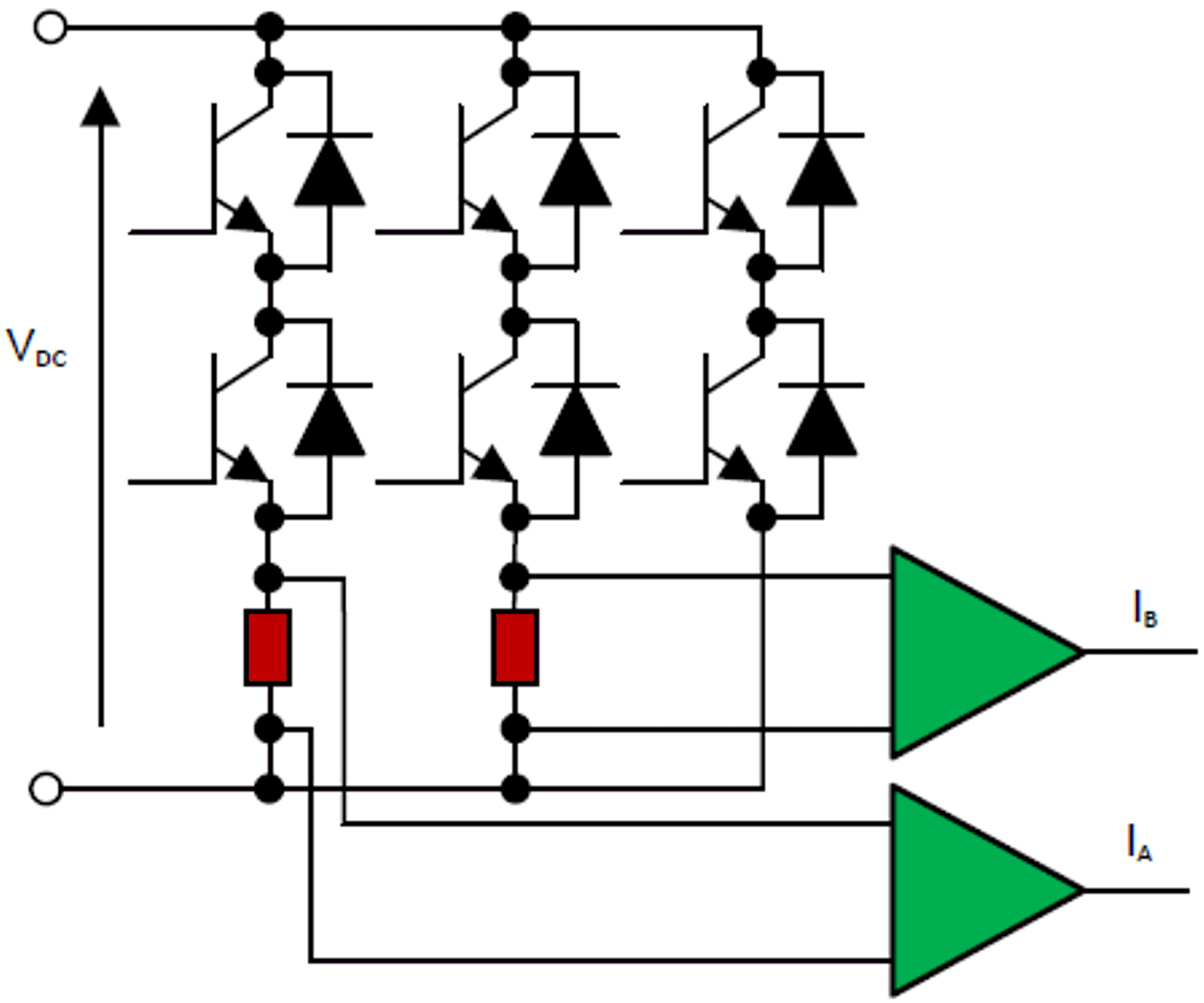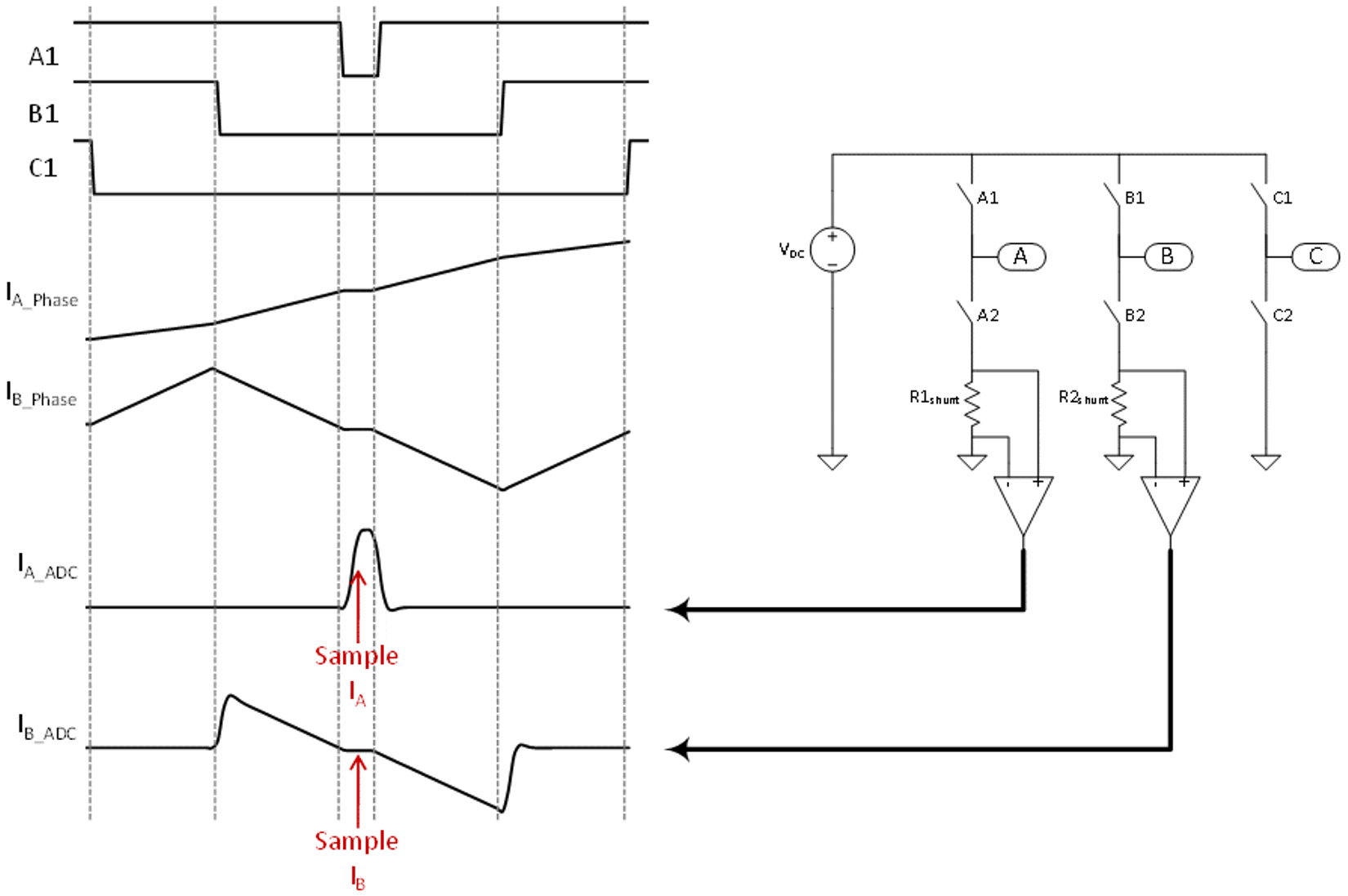SPRACT7 August 2020 TMS320F280021 , TMS320F280021-Q1 , TMS320F280023 , TMS320F280023-Q1 , TMS320F280023C , TMS320F280025 , TMS320F280025-Q1 , TMS320F280025C , TMS320F280025C-Q1 , TMS320F280040-Q1 , TMS320F280040C-Q1 , TMS320F280041 , TMS320F280041-Q1 , TMS320F280041C , TMS320F280041C-Q1 , TMS320F280045 , TMS320F280048-Q1 , TMS320F280048C-Q1 , TMS320F280049 , TMS320F280049-Q1 , TMS320F280049C , TMS320F280049C-Q1
2.2.1.2 Dual-Shunt Current Sensing
The two-shunt current measurement technique uses the principle of Kirchhoff's Current Law (KCL), which is that the sum of the currents into a single node equals zero. By measuring only two-phase currents, the third is calculated with KCL. Figure 2-5 shows a circuit for the two-shunt current measurement technique.
 Figure 2-5 Dual-Shunt Measurement Circuit
With Inverter
Figure 2-5 Dual-Shunt Measurement Circuit
With InverterThe two- and three-shunt measurement circuit has an advantage over the single-shunt circuit in that it can see circulating currents. Figure 2-6 shows an example of a switching waveform and where the analog-to-digital converter (ADC) samples the current. The PWM duty cycle for IA is almost 100% in this example, which causes the IA current to rise. The PWM for IB is about 50% duty cycle and its current stays at approximately 0 A for this period. Phase current can only be measured when the lower switch of that particular phase is conducting. In the example, IA is measureable for a very short time while IB has a long time to measure. The inherent problem of using two-shunt technique is when the measured phase is operating at PWMs near 100%. For example, when sampling IA, the measured current signal has not yet stabilized, which gives an incorrect representation of the current signal.
 Figure 2-6 Sampling Current When Using
Two-Shunt Measurement Technique
Figure 2-6 Sampling Current When Using
Two-Shunt Measurement TechniqueAs the duty cycle increases, the time to measure voltage across the shunt resistor for the phase decreases and the current measurement must be quicker. As the duty cycle increases even more, the slew rate of op amps must be increased to properly capture the signal. Although the two-shunt current measurement technique lessens the speed requirement of the op amp as compared to the single-shunt measurement, there is a duty cycle where the slew rate has to be very large, but still less than the requirement for a single-shunt.
For two- and three-shunt techniques, the current being measured is bipolar. So, 0 A is now represented as half of the ADC full scale and the quantization step size doubles.